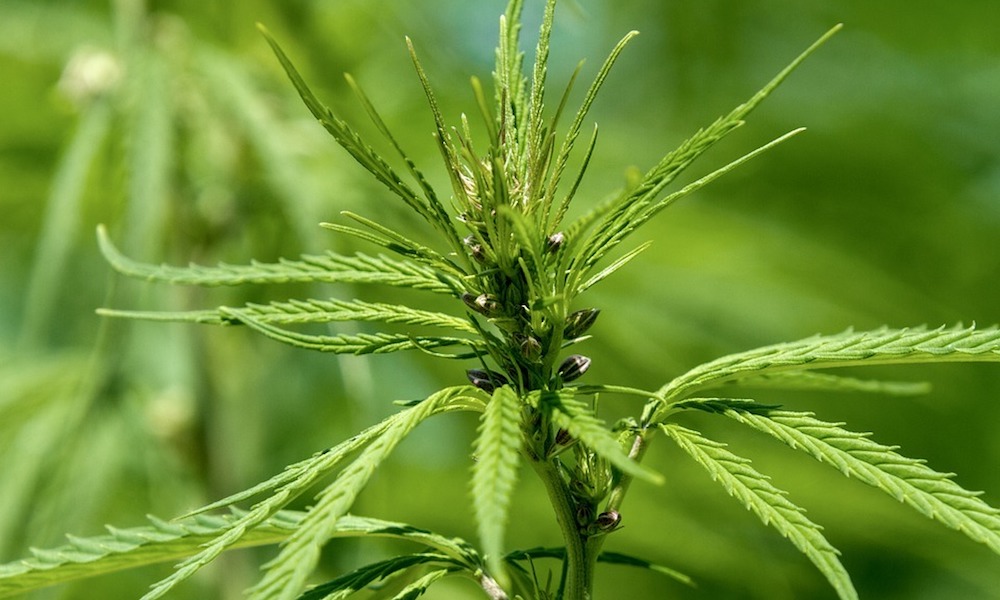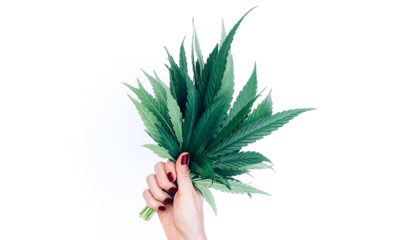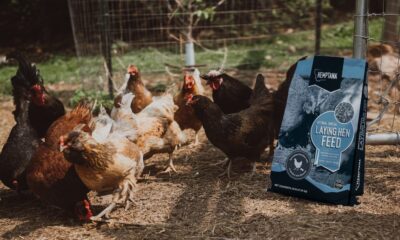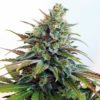
Hemp
USDA Releases Hemp Cultivation Regulations At Last
Hemp and hemp-derived CBD were officially legalized under the 2018 Farm Bill, but the U.S. Department of Agriculture didn’t bring its hemp regulations into conformity with the new federal law — until now.
Last December, the headlines rang across the country: Hemp is legalized! The 2018 Farm Bill had included an amendment that legalized hemp — defined as cannabis with less than 0.3% THC — and its derivatives, including CBD, and so the hemp industry celebrated its new freedom. However, it often takes a while for the federal government’s regulations to adjust to a new law, thereby slowing down the pace of change, and that has certainly been true for hemp. Without guidelines on CBD from the Food and Drug Administration or guidelines on hemp farming from the U.S. Department of Agriculture (USDA), hemp entrepreneurs have had to muddle through 2019 under their state’s hemp laws.
But on Tuesday, Oct. 29, Agriculture Secretary Sonny Perdue finally announced the establishment of the U.S. “Domestic Hemp Production Program” and put forth the interim regulations to oversee it.
After the 10-month wait, which had resulted in litigation by impatient farmers, Secretary Perdue did his best to sound chipper.
“At USDA, we are always excited when there are new economic opportunities for our farmers, and we hope the ability to grow hemp will pave the way for new products and markets,” Perdue said. “We have had teams operating with all-hands-on-deck to develop a regulatory framework that meets Congressional intent while seeking to provide a fair, consistent and science-based process for states, tribes and individual producers who want to participate in this program.”
Later this week, the “interim final rule” is to be published in the Federal Register, marking the opening of a 60-day period for public comment before the “interim” status is dropped. Then, the USDA will begin the process of reviewing hemp cultivation plans drawn up by states and other jurisdictions, to certify that they conform with the department’s own regulations. For any jurisdictions that do not submit plans, or otherwise do not have their plans approved, the USDA regulations will be the default.
This regulatory regime will make hemp producers eligible for a number of agricultural programs. Provisions include requirements for maintaining information on the lands where hemp is produced, testing THC levels, disposing of plants “not meeting necessary requirements” (read: containing over 0.3% THC), and protocols for licensing.
Along with the interim rule, the USDA’s Agricultural Marketing Service issued guidelines for those critical “sampling and testing procedures.”
Will Small Farmers Be Protected?
Republican Senate Majority Leader Mitch McConnell, who shepherded the Farm Bill through last year, issued a statement hailing the USDA regulations as a step toward a thriving national hemp industry.
“When I joined President Trump last year as he signed the farm bill, we marked a new chapter for an historic American crop,” he said. “In a victory for growers, processors, and manufacturers across the country — especially in my home state of Kentucky — my initiative for full hemp legalization became law… This new policy will help farmers around the country continue pioneering this crop into the 21st century.”
McConnell added, in a requisite appeal to patriotism: “For generations, our growers and producers have made the Bluegrass State an agricultural powerhouse, well-positioned at the forefront of hemp’s resurgence. Following the downturn in the tobacco market, it was my Tobacco Buyout legislation that helped farmers transition toward new opportunities. And a growing number are looking to this past crop — one grown by Washington, Jefferson and [Henry] Clay — as they plan for the future.”
The Tobacco Buyout refers to the USDA’s Tobacco Transition Payment Program, which took effect in 2004, to help farmers transition to new crops as federal subsidies for tobacco were phased out. The buyout expired in 2014, just as that year’s Farm Bill allowed the first legal hemp crops, as part of a limited pilot program — again pushed by McConnell.
“As the Buyout payments came to an end, I secured the creation of hemp pilot programs in the 2014 Farm Bill, empowering farmers and researchers to begin a multi-year experiment with hemp’s capabilities,” McConnell said in his press release.
Ironically, the tobacco industry today has a growing footprint in the cannabis sector. And with much hemp production now geared toward CBD extraction rather than traditional industrial uses, we can expect a growing convergence of the “cannabis” and “hemp” industries. Protections for independent farmers will certainly be a key concern as we enter the 60-day public comment period.
Legal Clarity for Native Americans
Another issue will be provisions for hemp cultivation on Native American reservations under the new regulations. Under a unique legal doctrine dating to the 1830s, federally recognized Indian reservations are “held in trust” for the tribes directly by the United States government. The sovereignty of the tribes can only be limited by Congress — not by the states in which the reservations lie. So Native American tribes could not operate under state hemp regulations, but were effectively barred from growing until the USDA issued regulations.
Non-native farmers in these states could grow hemp under state regulation, although they could not apply to participate in any USDA programs for the hemp sector until the department’s regs were finalized. That means Native American farmers were disproportionately affected by the USDA’s delay.
One tribe in South Dakota, the Flandreau Santee Sioux, this summer brought litigation against the USDA to demand its right to grow hemp. The tribe sought a court order forcing the USDA to approve its hemp cultivation plan within the usual 60-day period after submission. But a federal judge turned down the request, arguing that “the 60 day window to approve or deny a plan does not begin until regulations are promulgated by the USDA.”
Now that has finally happened, and while the Santee Sioux missed their opportunity for a 2019 hemp crop, hopefully they will be harvesting their first hemp-fields this time next year.
The USDA in late May issued a memo establishing protocols for interstate commerce in hemp, but failed to provide any legal clarity on the question of cultivation — leaving farmers and especially Native American tribes in legal limbo.
That limbo is now about to come to an end. However, legal ambiguities around hemp persist. Most significantly, the U.S. has still failed to promulgate regulations for use of legal hemp-derived CBD as an additive or ingredient.
TELL US, are you planning to grow hemp?























